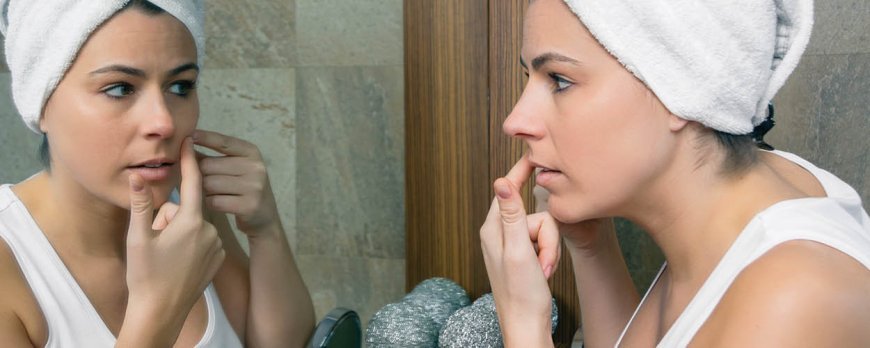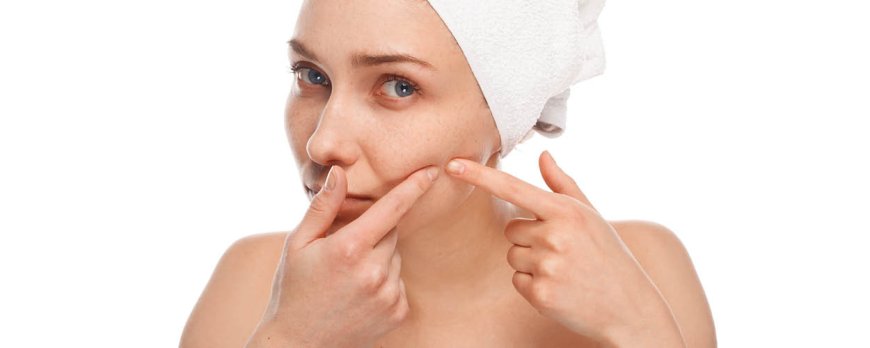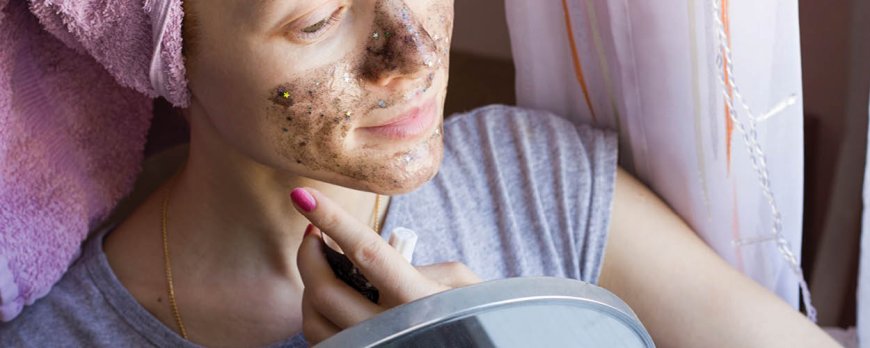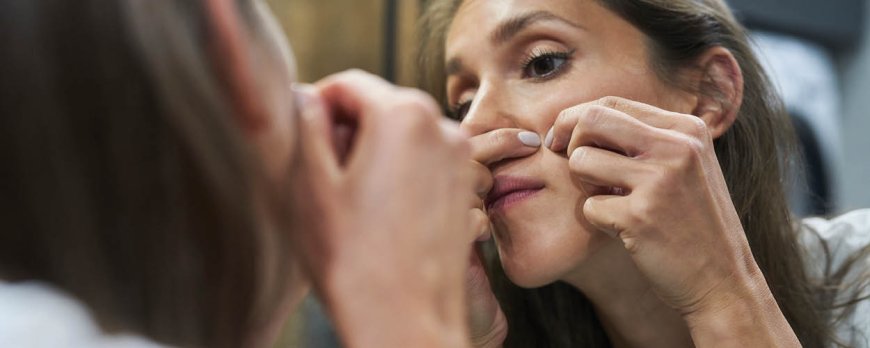What can be mistaken for cystic acne?
Uncover 'What can be mistaken for cystic acne?' in our detailed guide and learn how to differentiate between various skin conditions for accurate treatment.

What can be mistaken for cystic acne?
Cystic acne is a severe form of acne that can be painful and leave behind deep scars, but there are other skin conditions that can mimic its symptoms. It is important to distinguish these conditions from cystic acne in order to receive the appropriate treatment.
Key Takeaways:
- Perioral dermatitis can be mistaken for cystic acne due to its appearance of small pimples around the mouth.
- Rosacea can cause redness and acne-like bumps on the face, often leading to misdiagnosis as cystic acne.
- Keratosis pilaris appears as rough, red bumps on the upper arms and thighs and can be mistaken for cystic acne.
- Hidradenitis suppurativa presents as deep acne-like cysts in areas where skin touches skin, often leading to misdiagnosis.
- Chloracne is a rare condition characterized by blackheads, whiteheads, and cysts on the face and body, which may be mistaken for cystic acne.
Understanding cystic acne symptoms
Cystic acne is characterized by the presence of large, painful, and inflamed bumps on the skin, often referred to as cysts. It is a severe form of acne that can cause both physical discomfort and emotional distress. However, it is important to differentiate cystic acne from other skin conditions that may mimic its symptoms, as misdiagnosis can lead to ineffective treatment.
One common misconception is mistaking pimples for cysts. While both may appear as raised bumps on the skin, cystic acne cysts are much larger and deeper, often filled with pus and causing more severe inflammation. It is crucial to identify the size and depth of the bumps to determine if it is indeed cystic acne or another condition.
Other skin conditions, such as perioral dermatitis and rosacea, can also be mistaken for cystic acne. Perioral dermatitis manifests as a breakout of small pimples around the mouth, while rosacea causes redness and acne-like bumps on the face. Additionally, keratosis pilaris appears as rough, red bumps on the upper arms and thighs, and hidradenitis suppurativa presents as deep acne-like cysts in areas where the skin touches each other. Recognizing these distinct symptoms is essential for accurate diagnosis and appropriate treatment.
How to differentiate cystic acne from other conditions?
- Examine the size and depth of the bumps. Cystic acne cysts are typically larger and deeper than regular pimples.
- Observe the location of the breakout. Cystic acne commonly affects the face, chest, and back, while other conditions may have different distribution patterns.
- Take note of associated symptoms. Cystic acne is often accompanied by pain and inflammation, whereas other conditions may have different characteristics.
If you suspect that you may have cystic acne or a skin condition that resembles it, it is crucial to seek professional medical advice. A dermatologist or healthcare professional can provide an accurate diagnosis and personalized treatment plan to effectively manage your condition. Remember, proper diagnosis is the key to finding the right treatment and achieving clearer, healthier skin.
Perioral dermatitis: a common misdiagnosis
Perioral dermatitis is a skin condition that manifests as a rash of small, red, and sometimes pus-filled pimples around the mouth, chin, and nose. It can be easily mistaken for cystic acne due to its similar appearance. However, there are key differences that can help differentiate between the two.
One distinguishing factor is the location of the breakouts. While cystic acne can occur anywhere on the face, perioral dermatitis is typically localized around the mouth area. Additionally, perioral dermatitis tends to spare the skin right around the lips, creating a distinct border between the affected area and the lip itself.
Another characteristic of perioral dermatitis is its tendency to worsen with the use of topical corticosteroids, such as hydrocortisone creams. These creams may initially provide relief, but prolonged use can actually trigger or exacerbate the condition. This reaction to corticosteroids is not seen in cystic acne.
If you suspect that you may have perioral dermatitis instead of cystic acne, it is important to seek professional medical advice for an accurate diagnosis. A dermatologist can evaluate your symptoms and provide appropriate treatment options, which may include topical or oral medications, as well as lifestyle modifications to manage and prevent future flare-ups.
Rosacea and its acne-like symptoms
Rosacea is a common skin disorder characterized by facial redness, flushing, and the development of small, red bumps similar to acne. While it shares some similarities with cystic acne, there are key differences that can help differentiate the two conditions.
One distinguishing factor is the presence of persistent redness in individuals with rosacea. This redness typically affects the central portion of the face, such as the cheeks, nose, and forehead. In contrast, cystic acne is not associated with widespread facial redness.
Another differentiating feature is the nature of the bumps. In rosacea, the bumps are often small and solid, resembling acne papules or pustules. They are usually painless, and unlike the deep-seated cysts in cystic acne, they do not form abscesses or discharging pus.
It is important to accurately diagnose rosacea to ensure appropriate treatment. While cystic acne can be managed with specific medications and skincare routines, rosacea requires a different approach. Dermatologists may prescribe topical or oral medications, and recommend lifestyle modifications to manage triggers that can exacerbate the symptoms of rosacea.
Keratosis Pilaris and Its Resemblance to Cystic Acne
Keratosis pilaris is a harmless skin condition characterized by small, rough bumps that resemble acne and are often found on the back of the upper arms and thighs. While it may be mistaken for cystic acne, it is important to differentiate between the two in order to receive the appropriate treatment.
One key distinguishing factor between keratosis pilaris and cystic acne is the appearance of the bumps. Unlike cystic acne, which typically presents as large, red, and inflamed lesions, keratosis pilaris bumps are usually smaller and appear as tiny, flesh-colored or red bumps on the skin's surface. They can be accompanied by mild redness and itchiness, but unlike cystic acne, they seldom cause pain or discomfort.
Signs that can help identify keratosis pilaris include:
- Rough, sandpaper-like texture on the affected areas
- Bumps that tend to be more noticeable in dry weather or after showering
- Worsening of symptoms in colder months
- Improvement or temporary disappearance of bumps during summer
It's important to note that keratosis pilaris is a common condition that affects many individuals, especially during adolescence. It is not a form of acne and does not require traditional acne treatments such as topical or oral medications. Instead, the emphasis should be on gentle exfoliation and moisturization to help improve the appearance and texture of the skin.

Hidradenitis Suppurativa: A Skin Condition That Mimics Cystic Acne
Hidradenitis suppurativa is a chronic inflammatory skin condition characterized by painful, deep-seated cysts that often occur in areas such as the armpits, groin, and buttocks. This condition can be mistaken for cystic acne due to the presence of similar-looking bumps and lesions on the skin.
Unlike cystic acne, which primarily affects the face, hidradenitis suppurativa tends to occur in areas with apocrine sweat glands, where friction and heat can exacerbate the condition. The cysts can be inflamed, infected, and filled with pus, leading to discomfort and pain.
To differentiate hidradenitis suppurativa from cystic acne, it is important to consider the location of the lesions and the presence of other symptoms. Hidradenitis suppurativa is often associated with several factors, including family history, hormonal imbalances, obesity, and smoking.
Key Points:
- Hidradenitis suppurativa is a chronic inflammatory skin condition that resembles cystic acne.
- The condition primarily affects areas with apocrine sweat glands, such as the armpits, groin, and buttocks.
- Unlike cystic acne, hidradenitis suppurativa can result in painful, deep-seated cysts that are often inflamed and infected.
- Factors such as family history, hormonal imbalances, obesity, and smoking are associated with hidradenitis suppurativa.
If you suspect you may have hidradenitis suppurativa or are unsure about your diagnosis, it is crucial to seek professional medical advice. A dermatologist or healthcare professional can provide an accurate diagnosis and recommend appropriate treatment options tailored to your specific condition.
Chloracne: A Rare Condition with Acne-Like Symptoms
Chloracne is a rare type of acneiform eruption that is associated with exposure to certain chemicals, and it can often be mistaken for cystic acne. This condition is characterized by the presence of blackheads, whiteheads, and cysts on the face and body. While it shares similarities with cystic acne, chloracne requires a different approach to diagnosis and treatment.
When chloracne is mistaken for cystic acne, it can lead to misdiagnosis and ineffective treatment. It is essential to differentiate between the two conditions to ensure accurate treatment and better patient outcomes.
One way to distinguish chloracne from cystic acne is to identify the potential cause. Chloracne is typically caused by exposure to specific chemicals, such as dioxins or polychlorinated biphenyls (PCBs). Therefore, a detailed history of chemical exposure is crucial in the diagnostic process. Additionally, the appearance of the lesions in chloracne differs from cystic acne. The presence of blackheads, whiteheads, and cysts in areas not typically associated with acne, along with a history of chemical exposure, can help in identifying chloracne.
Key Points:
- Chloracne is a rare condition often mistaken for cystic acne
- It is associated with exposure to specific chemicals
- The presence of blackheads, whiteheads, and cysts, along with a history of chemical exposure, can aid in diagnosis
Correctly identifying chloracne is crucial to provide the appropriate treatment and management of this specific condition. If you suspect that you may have chloracne or any other skin condition, it is essential to consult with a dermatologist or healthcare professional for an accurate diagnosis and personalized treatment plan.

Other Conditions That May Resemble Cystic Acne
In addition to the aforementioned conditions, there are several other skin conditions that can present similarly to cystic acne, albeit less commonly. These conditions share some similarities with cystic acne, causing confusion and misdiagnosis. It is crucial to be aware of these conditions and their distinguishing features in order to receive the appropriate treatment.
One of these conditions is folliculitis, which occurs when hair follicles become inflamed and infected. It can manifest as small, red bumps or pus-filled blisters, resembling cystic acne. By differentiating the appearance and location of the bumps, a dermatologist can accurately diagnose folliculitis and recommend the appropriate treatment.
Another condition to consider is gram-negative folliculitis, a bacterial infection that commonly affects individuals with severe acne. It results in the development of red, pus-filled lesions that resemble cystic acne. Proper diagnosis is essential to differentiate between gram-negative folliculitis and cystic acne, as treatment approaches may vary.
Lastly, medication-induced acne is a possible cause of acne-like symptoms. Certain medications, such as corticosteroids and antiepileptic drugs, can trigger acne breakouts that mimic the appearance of cystic acne. Identifying the underlying cause of the acne is crucial in determining the appropriate treatment plan.
Proper diagnosis for effective treatment
Identifying the correct skin condition is crucial for determining the most appropriate treatment options and achieving optimal results. There are several conditions that can resemble cystic acne, making an accurate diagnosis essential. Here are some key factors to consider when seeking the right treatment:
- Symptoms: Pay attention to the specific symptoms you are experiencing. Cystic acne is characterized by large, painful, and deep-seated pimples or cysts, while other conditions may present with different types of blemishes or patterns.
- Location: The location of the breakout can provide valuable clues. Cystic acne typically occurs on the face, chest, back, and shoulders, while other conditions may have specific areas of manifestation.
- Duration: Consider the duration of the breakouts. Cystic acne can persist for weeks or even months, while some conditions may come and go more quickly.
- Personal and family history: Share any history of similar skin conditions or acne-related issues with your dermatologist. This information can help guide the diagnosis.
If you suspect that your acne may be misdiagnosed or if you have tried various treatments without success, it is important to seek professional medical advice. A dermatologist can accurately assess your condition, perform tests if necessary, and provide a personalized treatment plan.
Remember, self-diagnosis may lead to ineffective treatment and prolonged discomfort. With the guidance of a healthcare professional, you can navigate the complexities of differentiating between cystic acne and its look-alike conditions, ensuring accurate diagnosis and subsequent accurate treatment.
Seeking Professional Medical Advice
If you are experiencing persistent or severe acne-like symptoms, it is advisable to seek medical advice from a qualified professional. While cystic acne is a common and well-known condition, there are several other skin conditions that can mimic its symptoms. These conditions, such as perioral dermatitis, rosacea, keratosis pilaris, hidradenitis suppurativa, and chloracne, require different treatment approaches than cystic acne. Consulting with a dermatologist or healthcare provider will ensure an accurate diagnosis and appropriate treatment plan.
A dermatologist is a specialist who can evaluate your symptoms, examine your skin, and provide a diagnosis. They have the expertise to differentiate between cystic acne and other look-alike conditions, taking into consideration various factors like the location, appearance, and duration of your symptoms. The correct diagnosis is crucial for determining the most effective treatment strategy tailored to your specific condition.
During your appointment, be prepared to provide a detailed history of your symptoms, including when they first appeared and any factors that may exacerbate or improve them. This information will help the dermatologist make an accurate diagnosis. They may also conduct additional tests, such as skin biopsies or blood work, if necessary.
Benefits of Seeking Professional Advice
- Accurate diagnosis: A dermatologist can distinguish between cystic acne and other similar conditions, ensuring you receive the right treatment.
- Promote effective treatment: Each condition requires specific treatment approaches, and professional advice will help you avoid ineffective or potentially harmful remedies.
- Prevent complications: Certain conditions that resemble cystic acne, such as hidradenitis suppurativa, can lead to complications if left untreated. Seeking professional advice will ensure prompt management and prevention of potential complications.
- Personalized care: By consulting with a dermatologist, you will receive personalized care and recommendations tailored to your specific condition and needs.
- Optimize results: Getting the correct diagnosis and appropriate treatment will maximize the chances of achieving clear and healthy skin.
In conclusion, if you are experiencing persistent or severe acne-like symptoms, it is crucial to seek professional medical advice. A dermatologist or healthcare provider can accurately diagnose your condition and develop an effective treatment plan. By consulting with a professional, you can ensure that you receive the appropriate care for cystic acne or any other look-alike conditions that may be causing your symptoms.

Home Remedies and Self-Care Tips for Cystic Acne
While it is essential to consult with a healthcare professional for cystic acne, there are some self-care tips and home remedies that may provide temporary relief. These can help manage symptoms and promote overall skin health. However, it is important to note that these remedies are not substitutes for medical advice or treatment. Here are some tips to consider:
- Keep your skin clean: Gently cleanse your face twice a day with a mild, non-comedogenic cleanser to remove excess oil, dirt, and bacteria. Avoid harsh scrubbing, as it can aggravate cystic acne.
- Avoid picking or squeezing acne lesions: Popping pimples can lead to further inflammation, scarring, and potential infection. Keep your hands off your face to prevent worsening of cystic acne.
- Apply warm compresses: Placing a warm compress on cystic acne lesions can help reduce inflammation and promote healing. Be sure to use a clean towel or cloth and apply for 10-15 minutes at a time.
- Use oil-free and non-comedogenic products: Choose cosmetics, moisturizers, and sunscreen labeled as oil-free or non-comedogenic. These products are less likely to clog pores and worsen acne breakouts.
- Manage stress levels: Stress can contribute to hormonal imbalances and worsen cystic acne. Incorporate stress management techniques such as mindfulness, exercise, and relaxation exercises into your daily routine.
Remember, these self-care tips may provide temporary relief but are not a substitute for professional treatment. If you are struggling with cystic acne, it is important to consult with a dermatologist or healthcare professional who can provide a personalized treatment plan based on your specific needs. They can recommend topical medications, oral antibiotics, hormonal therapies, or other treatments to help manage and reduce cystic acne.
Conclusion
Properly identifying cystic acne and distinguishing it from other skin conditions is crucial in order to receive the appropriate treatment and achieve healthier skin.
There are several skin conditions that can be easily mistaken for cystic acne. Perioral dermatitis, for example, presents as a breakout of small pimples around the mouth, while rosacea causes redness and acne-like bumps on the face. Keratosis pilaris appears as rough, red bumps on the upper arms and thighs, and hidradenitis suppurativa manifests as deep acne-like cysts in areas where the skin touches or rubs against each other. Additionally, chloracne, although rare, is characterized by the development of blackheads, whiteheads, and cysts on the face and body.
It is important to distinguish these conditions from cystic acne in order to receive the appropriate treatment. Misdiagnosis can lead to ineffective treatment and further exacerbation of symptoms. Consulting with a dermatologist or healthcare professional is recommended to obtain an accurate diagnosis. They will be able to identify the specific condition and provide personalized treatment options.
In the meantime, while waiting for professional advice or treatment, there are some self-care tips and home remedies that can help manage cystic acne symptoms. These may include gentle cleansing, avoiding harsh skincare products, using oil-free moisturizers, and avoiding excessive touching or picking of the affected areas. However, it is important to note that these measures may not address the underlying cause of the condition and should not substitute for professional medical advice.
By understanding the various conditions that can be mistaken for cystic acne and seeking proper medical advice, individuals can ensure they receive accurate diagnoses and effective treatments. With the right approach, it is possible to manage these skin conditions and achieve healthier, clearer skin.
FAQ
What are some skin conditions that can be mistaken for cystic acne?
Perioral dermatitis, rosacea, keratosis pilaris, hidradenitis suppurativa, and chloracne are some skin conditions that can be mistaken for cystic acne.
What are the symptoms of cystic acne?
Cystic acne is characterized by large, painful, inflamed cysts or nodules. It can also cause redness, swelling, and tenderness in the affected area.
What is perioral dermatitis?
Perioral dermatitis manifests as a breakout of small pimples around the mouth, often mistaken for cystic acne.
How does rosacea resemble cystic acne?
Rosacea causes redness and acne-like bumps on the face, leading to misdiagnosis as cystic acne.
What is keratosis pilaris?
Keratosis pilaris appears as rough, red bumps on the upper arms and thighs, sometimes mistaken for cystic acne.
What is hidradenitis suppurativa?
Hidradenitis suppurativa presents as deep acne-like cysts in areas where skin touches or rubs against each other, resembling cystic acne.
What is chloracne?
Chloracne is a rare condition characterized by blackheads, whiteheads, and cysts on the face and body, often misdiagnosed as cystic acne.
Are there any other skin conditions that resemble cystic acne?
Yes, there are other skin conditions that may resemble cystic acne, though they are less commonly seen.
Why is accurate diagnosis important for effective treatment?
Accurate diagnosis is crucial to ensure that the appropriate treatment is administered for both cystic acne and its look-alike conditions.
Should I seek professional medical advice for cystic acne or look-alike conditions?
It is recommended to consult with a dermatologist or healthcare professional for an accurate diagnosis and personalized treatment plan.
Are there any home remedies or self-care tips for managing cystic acne?
While waiting for professional advice or treatment, some general self-care tips and home remedies, such as keeping the affected area clean and avoiding harsh skincare products, can help manage cystic acne symptoms.




























































































































